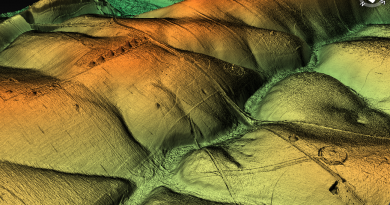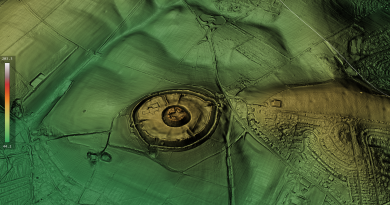Stone Money – Credit System
Contents
Introduction
Stone money represents a prehistoric credit system – it’s rather obvious looking at the number of Stone Circles in Britain really, if you clear your mind of the nonsense archaeologists and new age geeks would ask you to believe. The enormity that the massive megalithic stones at Avebury, which were gradually placed over time, could represent a form of currency or a system of economic exchange is an intriguing hypothesis. While we may not have sufficient evidence to confirm this theory, it’s worth considering how ancient societies developed systems of trade and commerce.
Without modern currency and banking systems, early civilisations often relied on various forms of value representation for trade. These could include commodities like livestock, grain, or precious metals. In some cases, symbolic items, such as large stones, might have represented wealth or value within a particular community or trading network.
Using large stones as a currency or trade representation could have practical benefits. They would be challenging to counterfeit or manipulate, and their size and permanence would make them suitable for long-term economic transactions. As families or traders became necessary, they might have added more stones to their collection, symbolizing their increasing wealth and influence.
While this hypothesis provides an interesting perspective on the purpose of Avebury’s megaliths, it’s essential to note that the true nature of these stones’ significance remains debatable among archaeologists and historians. Further research and archaeological discoveries may help shed more light on their role in ancient society.
So, why did they use these massive stones at Avebury?
Money! If you have a trading civilisation and economy and progress past ‘bartering’, you will need currency of some form to take in exchange for goods. This would explain why they are so large and seem not to have a practical use.
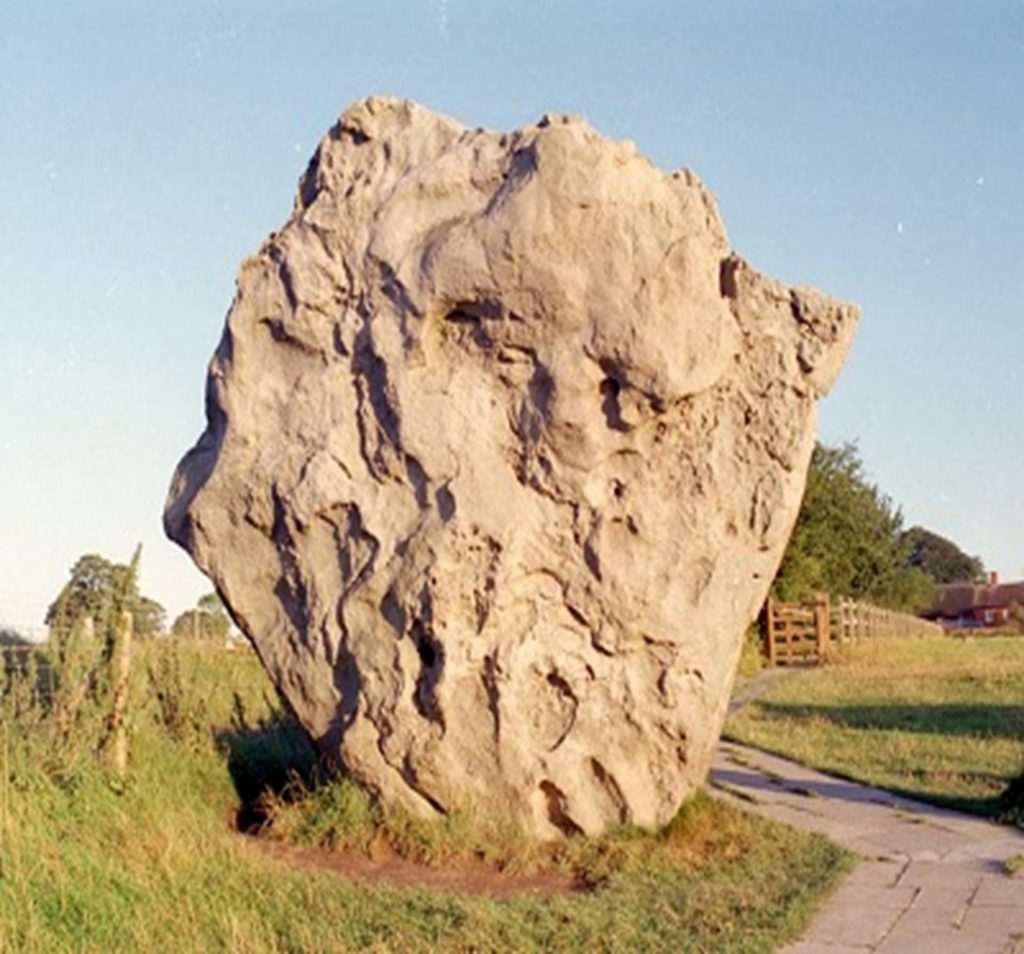
| Figure 46- What was the purpose of such a stone? |
Some may see this idea as ‘far-fetched’ to think of stone as money, but consider what’s in your pocket today that you use for currency, metal and paper. And of those two substances, which has the greater value – paper!
How can paper be more valuable than metal – it’s not like it grows on trees.
Paper is less precious than metal, yet we value this ‘special paper’ more because it has what is known as ‘perceived value’ (it’s not real). And this ‘perceived value’ is the same principle our ancestors gave stone – still unconvinced?
The Island of Yap – Wikipedia
“Yap is an island in the Caroline Islands of the western Pacific Ocean. It is considered to be made up of four separate islands: Yap Island proper ,Tamil/Gagil, Maap and Rumung. The three are contiguous though separated by water and are surrounded by a common coral reef. They are formed from an uplift of the Philippine Sea Plate, and are referred to as “high” islands as opposed to atolls. The land is mostly rolling hills densely vegetated. Mangrove swamps line much of the shore. Yap’s indigenous cultures and traditions are strong compared to other states in Micronesia.
Colonia is the capital of the State of Yap which includes Yap proper and the fourteen outer islands (mostly atolls) reaching to the east and south for some 800 km (500 mi), namely Eauripik, Elato, Fais, Faraulep, Gaferut, Ifalik, Lamotrek, Ngulu, Olimarao, Piagailoe (West Fayu), Pikelot, Sorol, Ulithi, and Woleai atolls, as well as the island of Satawal . Historically a tributary system existed between the outer islands and Yap this probably related to the need for goods from the high islands, including food, as well as wood for construction of seagoing vessels.”
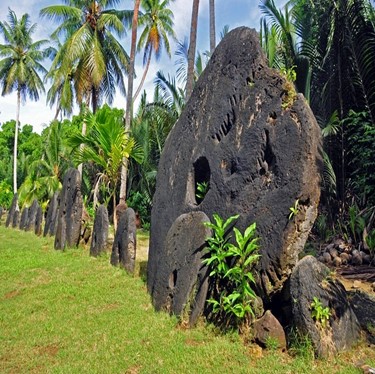
| Figure 47 – Yap Money Stone |
Let’s look at the Yap system and see if we can draw parallels or similarities to what we find at Avebury.
The Yap system, practised by the Yapese people of the island of Yap in the western Pacific, is a unique form of currency known as “rai stones.” These stones are enormous circular discs made from limestone or coral and can reach sizes of up to 12 feet in diameter. The key features of the Yap system include:
Ownership and Ownership History: Similar to what you mentioned about Avebury’s megalithic stones, each rai stone has a history of ownership. The Yapese people kept oral records of who owned each stone and the transactions involving them. The ownership history was vital for the legitimacy and value of the rai.
Immovable and Symbolic: Rai stones are immovable due to their size and weight. They are typically kept in a prominent location within the community, often in a public space. While the stones might not have practical utility, they represent a form of wealth and value, similar to how you suggested that Avebury’s stones could serve as currency symbols.
Community Recognition: The Yapese community collectively recognizes the ownership and value of each rai stone, even if they are not physically moved during transactions. This collective recognition is essential for the functioning of the system.
Symbolic and Practical Value: Rai stones have both symbolic and practical value. While they represent wealth and could be used in significant transactions, the Yapese people used other forms of currency, like shell money, for everyday transactions due to the impracticality of regularly moving large rai stones.
Longevity and Stability: The Yap system has endured for centuries, indicating its stability and effectiveness as a form of currency and value representation.
Now, let’s draw some potential parallels to Avebury.
Ownership and History: If the megalithic stones at Avebury were used as a form of currency or value representation, they might have had histories of ownership or significance within specific communities or trading networks.
Symbolic Value: The sheer size and prominence of the Avebury stones could have endowed them with symbolic value, much like the rai stones on Yap. These stones might not have had practical uses but represented wealth and importance.
Community Recognition: The recognition of the value of these stones within the Avebury community or among trading partners would have been crucial for their function.
Use in Trade: If these stones represented value, they could have been used in trade or as a store of wealth for significant transactions, much like the rai stones.
While these parallels are intriguing, it’s essential to remember that the specific function of Avebury’s megalithic stones remains controversial among scholars. The Yap system provides a fascinating case study in the use of symbolic and immovable objects as a form of currency and value representation, but determining the exact purpose of Avebury’s stones may require further archaeological research and evidence.
Stone Money
Yap is known for its stone money, known as Rai: large doughnut-shaped, carved disks of (usually) calcite, up to 4 m (12 ft) in diameter (most are much smaller). The smallest can be as little as 3.5 centimetres (1.4 in) in diameter. There are five major types of monies: Mmbul, Gaw, Fe’ or Rai, Yar, and Reng, this last being only 0.3 m (1 ft) in diameter. Many of them were brought from other islands, as far as New Guinea, but most came in ancient times from Palau. Their value is based on both the stone’s size and its history. Historically the Yapese valued the disks because the material looks like quartz, and these were the shiniest objects around. Eventually the stones became legal tender and were even mandatory in some payments.
The value of the stones was kept high due to the difficulty and hazards involved in obtaining them. To quarry the stones, Yapese adventurers had to sail to distant islands and deal with local inhabitants who were sometimes hostile. Once quarried, the disks had to be transported back to Yap on rafts towed behind sail-driven canoes. The scarcity of the disks, and the effort and peril required to get them, made them valuable to the Yapese. However in 1874, an enterprising Irish sea captain named David O’Keefe hit upon the idea of employing the Yapese to import more “money” in the form of shiploads of large stones, also from Palau. O’Keefe then traded these stones with the Yapese for other commodities such as sea cucumbers and copra. The 1954 movie His Majesty O’Keefe cast Burt Lancaster in the captain’s role. Although some of the O’Keefe stones are larger than the canoe-transported stones, they are less valuable than the earlier stones due to the comparative ease with which they were obtained.
As no more disks are being produced or imported, this money supply is fixed. The islanders know who owns which piece but do not necessarily move them when ownership changes. Their size and weight (the largest ones require 20 adult men to carry) make them very difficult to move around. Although today the United States dollar is the currency used for everyday transactions in Yap, the stone disks are still used for more traditional or ceremonial exchange. The stone disks may change ownership during marriages, transfers of land title, or as compensation for damages suffered by an aggrieved party.
Indeed, the value of stones, as demonstrated by the rai stones of Yap and potentially in the case of Avebury’s megalithic stones, is often determined by factors like rarity, size, and symbolic significance. In both systems, these stones represent wealth and value, even if they are immovable due to their size or impracticality.
With its rai stones, the Yapese system offers a valuable perspective on how societies can create and maintain unique forms of currency and value representation. While the Yapese stones are immovable, their ownership history, community recognition, and symbolic value make them effective instruments of trade and wealth within their cultural context.
Exploring the potential parallels between these systems provides insight into how human societies have developed and adapted to meet their economic and social needs throughout history. It reminds us that the concept of currency and value can take many forms, and understanding these systems enriches our understanding of human culture and exchange.
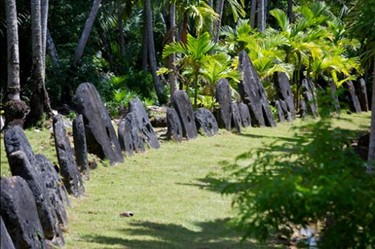
Figure 48 – If we knew no better, would archaeologists describe this as a ‘stone circle’?
Do you still find it hard to understand?
Casino Chips
We can use an analogy with Casino chips and the Yapese rai stones, the gold standard, and modern paper currency based on their representation of value. Indeed, these examples demonstrate the abstract nature of currency and how societies attribute value to various objects or symbols, which can facilitate trade and economic activities.
The comparison to casino chips is particularly apt, as it highlights how a simple token or representation can hold significant value within a specific context, even though it may not have intrinsic value outside of that environment. The key is the shared belief and trust in the currency’s value within the given system, whether rai stones, gold, or paper money.
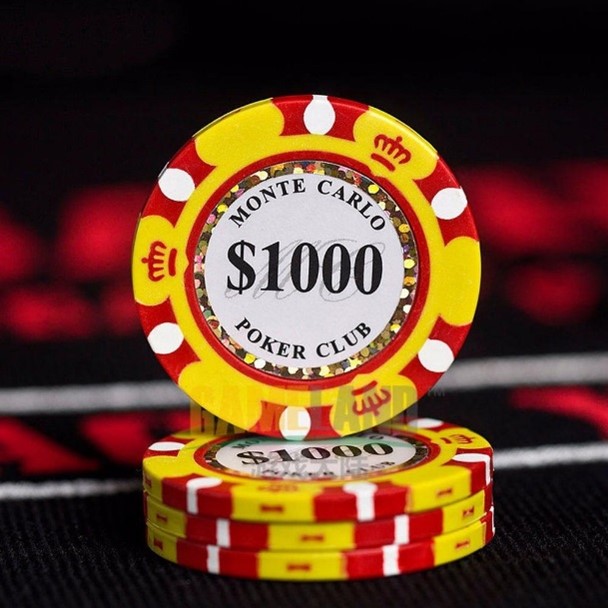
| Figure 49 – A Casino Chip has Zero value outside the casino |
Polished and Drilled Stone Objects
These historical examples serve as a reminder that the concept of currency is a social and cultural construct subject to change and adaptation over time. Understanding these different systems broadens our perspective on economics, trade, and how human societies have organized their economies throughout history.
Consequently, the potential purpose of polished and drilled stone axes and maces in ancient cultures is intriguing. Drawing a parallel between these artefacts and the Yapese rai stones with holes in the middle for transportation on poles is a fascinating connection. It highlights the practicality of designing functional and easily transportable items, especially in societies where long-distance trade or movement of goods was essential.
The idea was that some standing stones with holes, like the Men-an-tol Stone in Cornwall, might have served as trading points or markers. These types of stones with holes may have also been at Avebury, but the fact they have holes in the middle would make them ‘easy targets’ for stone robbers we know who have tried to dismantle the stones for stone walls over the last two thousand years.
These stones could have played a role in facilitating trade or communication, marking specific routes, or serving as significant landmarks in ancient landscapes.
Exploring these connections and possibilities can contribute to a deeper understanding of how ancient societies operated, traded, and communicated, shedding light on their economic and cultural practices. It’s a reminder that our interpretations of the past are continuously evolving as we uncover new evidence and make innovative connections between artefacts and historical records.
Can we conclude that smaller ‘worked’ stones were highly valued as polishing and drilling increased their preciousness?
Indeed, the evidence suggests that smaller stones, meticulously worked and adorned with holes, carry a higher value in the ancient world. It is not unlike our contemporary world, where the intrinsic value of precious gems far surpasses that of common stones.
The analogy to paper money and the symbolism of holes in these stones are both enlightening. Just as our modern currency is designed with intricate security features to protect its value, these ancient stones, with their deliberate perforations, could have served as both a marker of worth and a safeguard against theft or counterfeiting.
A pure gold coin worth a house highlights the importance of safeguarding items of great value. Such precious possessions would not be carelessly thrown into pockets or purses; instead, they would be kept secure, just as these stone artefacts may have been safeguarded.
The practical aspect of jewellery and its relation to the holed stones and ancient currency is fascinating. Indeed, people wear valuable items like coins and stones around their necks, waists, or wrists to provide easy access and security. It’s a testament to the enduring desire to keep precious possessions close.
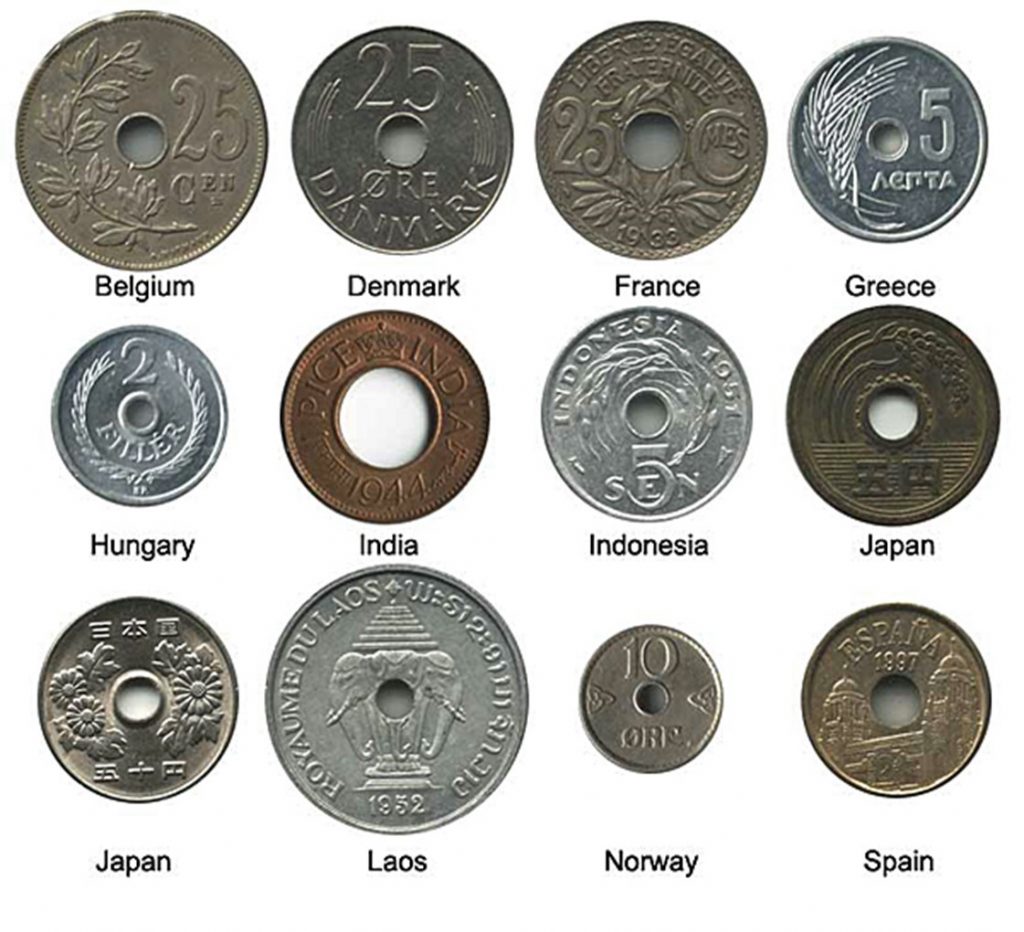
| Figure 50 – Holes in coins are there so that they can be carried safely. |
Furthermore, the sophistication of this ancient civilisation’s financial and trading networks is enlightening. Using these large stones as a form of currency suggests a complex and well-organized society with extensive trading connections spanning the known world. This speaks to their economic prowess and ability to maintain a system of trust and value in their currency.
Avebury’s huge ditch that surrounds the town is 21m wide and 11m deep with a single bank, which would have been some 20m high before compression reduced the bank to the 10m we see today.
We are looking for a civilisation that can excavate 21m x 11m x 1.34km long or 309,540 m3 or equivalent to 11 million working hours at one cubic foot per hour or a gang of 100 diggers and 100 carriers (supported by an even more significant number of support people to cloth, feed and provide tools to allow continuation – through summer and winter) working non-stop for 50+ years!!!
Furthermore, you will need another 1,000 citizens of the society working on this one project for about 40 years to support the manual labour to construct this – trading centre.
Consequently, the engineering feats of Avebury and Silbury Hill are genuinely awe-inspiring, and the calculations regarding the monumental effort required to construct these massive earthworks shed light on the level of organisation and labour force needed. Using currency to provide credit for such ambitious projects is a valuable insight into the economic infrastructure that supported these ancient endeavours. It underscores the importance of credit and financial systems in developing monumental structures like these.
In our quest to understand the past, we must continue to explore the multifaceted aspects of ancient societies, from their financial systems to their engineering feats and perspectives, offering a unique and thought-provoking lens through which to view these enigmatic relics of history.
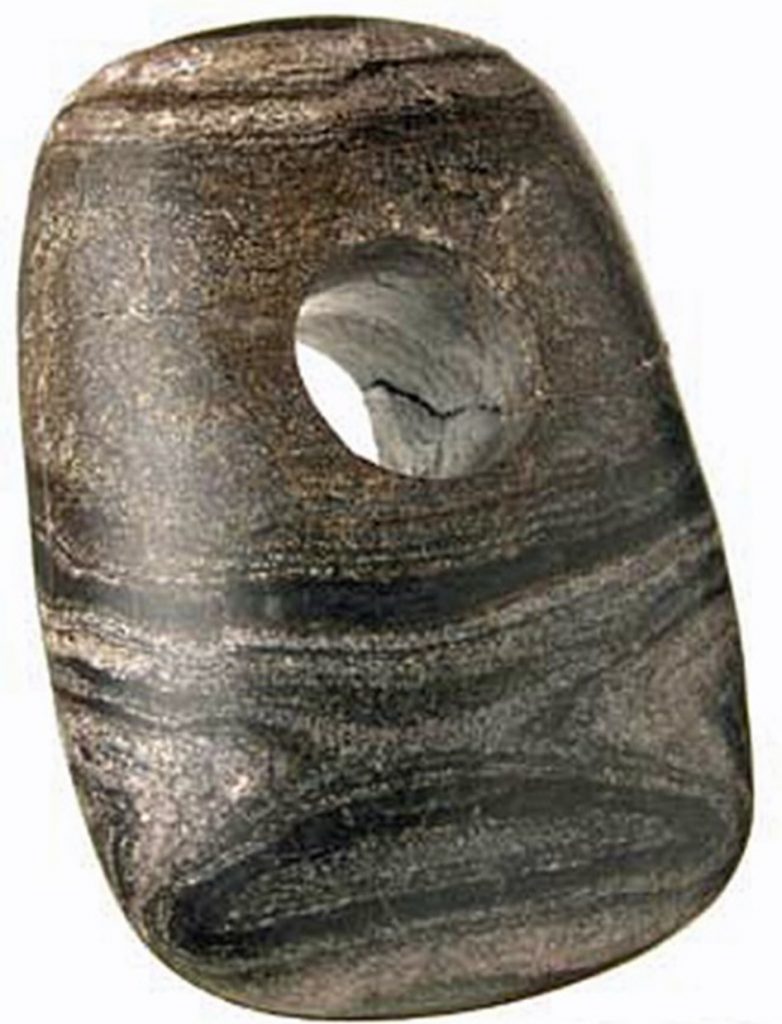
| Figure 51 Mace Axe Head with hole – thses objects have never been used as tools – so were they stone currency? |
Further Reading
For information about British Prehistory, visit www.prehistoric-britain.co.uk for the most extensive archaeology blogs and investigations collection, including modern LiDAR reports. This site also includes extracts and articles from the Robert John Langdon Trilogy about Britain in the Prehistoric period, including titles such as The Stonehenge Enigma, Dawn of the Lost Civilisation and the ultimate proof of Post Glacial Flooding and the landscape we see today.
Robert John Langdon has also created a YouTube web channel with over 100 investigations and video documentaries to support his classic trilogy (Prehistoric Britain). He has also released a collection of strange coincidences that he calls ‘13 Things that Don’t Make Sense in History’ and his recent discovery of a lost Stone Avenue at Avebury in Wiltshire called ‘Silbury Avenue – the Lost Stone Avenue’.
Langdon has also produced a series of ‘shorts’, which are extracts from his main body of books:
For active discussions on the findings of the TRILOGY and recent LiDAR investigations that are published on our WEBSITE, you can join our and leave a message or join the debate on our Facebook Group.
Stone Money – Credit System
Other Blogs
1
a
- AI now Supports – Homo Superior
- AI now supports my Post-Glacial Flooding Hypothesis
- Alexander the Great sailed into India – where no rivers exist today
- Ancient Prehistoric Canals – The Vallum
- Ancient Secrets of Althorp – debunked
- Antler Picks built Ancient Monuments – yet there is no real evidence
- Antonine Wall – Prehistoric Canals (Dykes)
- Archaeological ‘pulp fiction’ – has archaeology turned from science?
- Archaeological Pseudoscience
- Archaeology in the Post-Truth Era
- Archaeology: A Bad Science?
- Archaeology: A Harbour for Fantasists?
- Archaeology: Fact or Fiction?
- Archaeology: The Flaws of Peer Review
- Archaeology’s Bayesian Mistake: Stop Averaging the Past
- Are Raised Beaches Archaeological Pseudoscience?
- Atlantis Found: The Mathematical Proof That Plato’s Lost City Was Doggerland
- ATLANTIS: Discovery with Dan Snow Debunked
- Avebury Ditch – Avebury Phase 2
- Avebury Post-Glacial Flooding
- Avebury through time
- Avebury’s great mystery revealed
- Avebury’s Lost Stone Avenue – Flipbook
b
- Battlesbury Hill – Wiltshire
- Beyond Stone and Bone: Rethinking the Megalithic Architects of Northern Europe
- BGS Prehistoric River Map
- Blackhenge: Debunking the Media misinterpretation of the Stonehenge Builders
- Brain capacity (Cro-Magnon Man)
- Brain capacity (Cro-Magnon Man)
- Britain’s First Road – Stonehenge Avenue
- Britain’s Giant Prehistoric Waterways
- British Roman Ports miles away from the coast
c
- Caerfai Promontory Fort – Archaeological Nonsense
- Car Dyke – ABC News PodCast
- Car Dyke – North Section
- CASE STUDY – An Inconvenient TRUTH (Craig Rhos Y Felin)
- Case Study – River Avon
- Case Study – Woodhenge Reconstruction
- Chapter 2 – Craig Rhos-Y-Felin Debunked
- Chapter 2 – Stonehenge Phase I
- Chapter 2 – Variation of the Species
- Chapter 3 – Post Glacial Sea Levels
- Chapter 3 – Stonehenge Phase II
- Chapter 7 – Britain’s Post-Glacial Flooding
- Cissbury Ring through time
- Cro-Magnon Megalithic Builders: Measurement, Biology, and the DNA
- Cro-Magnons – An Explainer
d
- Darwin’s Children – Flipbook
- Darwin’s Children – The Cro-Magnons
- Dawn of the Lost Civilisation – Flipbook
- Dawn of the Lost Civilisation – Introduction
- Digging for Britain – Cerne Abbas 1 of 2
- Digging for Britain Debunked – Cerne Abbas 2
- Digging Up Britain’s Past – Debunked
- DLC Chapter 1 – The Ascent of Man
- Durrington Walls – Woodhenge through time
- Dyke Construction – Hydrology 101
- Dykes Ditches and Earthworks
- DYKES of Britain
e
f
g
h
- Hadrian’s Wall – Military Way Hoax
- Hadrian’s Wall – the Stanegate Hoax
- Hadrian’s Wall LiDAR investigation
- Hambledon Hill – NOT an ‘Iron Age Fort’
- Hayling Island Lidar Maps
- Hidden Sources of Ancient Dykes: Tracing Underground Groundwater Fractals
- Historic River Avon
- Hollingsbury Camp Brighton
- Hollows, Sunken Lanes and Palaeochannels
- Homo Superior – Flipbook
- Homo Superior – History’s Giants
- How Lidar will change Archaeology
i
l
m
- Maiden Castle through time
- Mathematics Meets Archaeology: Discovering the Mesolithic Origins of Car Dyke
- Mesolithic River Avon
- Mesolithic Stonehenge
- Minerals found in Prehistoric and Roman Quarries
- Mining in the Prehistoric to Roman Period
- Mount Caburn through time
- Mysteries of the Oldest Boatyard Uncovered
- Mythological Dragons – a non-existent animal that is shared by the World.
o
- Offa’s Dyke Flipbook
- Old Sarum Lidar Map
- Old Sarum Through Time…………….
- On Sunken Lands of the North Sea – Lived the World’s Greatest Civilisation.
- OSL Chronicles: Questioning Time in the Geological Tale of the Avon Valley
- Oswestry LiDAR Survey
- Oswestry through time
- Oysters in Archaeology: Nature’s Ancient Water Filters?
p
- Pillow Mounds: A Bronze Age Legacy of Cremation?
- Post Glacial Flooding – Flipbook
- Prehistoric Burial Practices of Britain
- Prehistoric Canals – Wansdyke
- Prehistoric Canals – Wansdyke
- Prehistoric Canals (Dykes) – Great Chesters Aqueduct (The Vallum Pt. 4)
- Prehistoric Canals (Dykes) – Hadrian’s Wall Vallum (pt 1)
- Prehistoric Canals (Dykes) – Offa’s Dyke (Chepstow)
- Prehistoric Canals (Dykes) – Offa’s Dyke (LiDAR Survey)
- Prehistoric Canals (Dykes) – Offa’s Dyke Survey (End of Section A)
- Prehistoric Canals (Dykes) – Wansdyke (4)
- Prehistoric Canals Wansdyke 2
- Professor Bonkers and the mad, mad World of Archaeology
r
- Rebirth in Stone: Decrypting the Winter Solstice Legacy of Stonehenge
- Rediscovering the Winter Solstice: The Original Winter Festival
- Rethinking Ancient Boundaries: The Vallum and Offa’s Dyke”
- Rethinking Ogham: Could Ireland’s Oldest Script Have Begun as a Tally System?
- Rethinking The Past: Mathematical Proof of Langdon’s Post-Glacial Flooding Hypothesis
- Revolutionising History: Car Dyke Unveiled as Prehistoric & the Launch of FusionBook 360
- Rising Evidence, Falling Rivers: The Real Story of Europe’s First Farmers
- Rivers of the Past Were Higher: A Fresh Perspective on Prehistoric Hydrology
s
- Sea Level Changes
- Section A – NY26SW
- Section B – NY25NE & NY26SE
- Section C – NY35NW
- Section D – NY35NE
- Section E – NY46SW & NY45NW
- Section F – NY46SE & NY45NE
- Section G – NY56SW
- Section H – NY56NE & NY56SE
- Section I – NY66NW
- Section J – NY66NE
- Section K – NY76NW
- Section L – NY76NE
- Section M – NY87SW & NY86NW
- Section N – NY87SE
- Section O – NY97SW & NY96NW
- Section P – NY96NE
- Section Q – NZ06NW
- Section R – NZ06NE
- Section S – NZ16NW
- Section T – NZ16NE
- Section U – NZ26NW & NZ26SW
- Section V – NZ26NE & NZ26SE
- Silbury Avenue – Avebury’s First Stone Avenue
- Silbury Hill
- Silbury Hill / Sanctuary – Avebury Phase 3
- Somerset Plain – Signs of Post-Glacial Flooding
- South Cadbury Castle – Camelot
- Statonbury Camp near Bath – an example of West Wansdyke
- Stone me – the druids are looking the wrong way on Solstice day
- Stone Money – Credit System
- Stone Transportation and Dumb Censorship
- Stonehenge – Monument to the Dead
- Stonehenge Hoax – Dating the Monument
- Stonehenge Hoax – Round Monument?
- Stonehenge Hoax – Summer Solstice
- Stonehenge LiDAR tour
- Stonehenge Phase 1 — Britain’s First Monument
- Stonehenge Phase I (The Stonehenge Landscape)
- Stonehenge Solved – Pythagorean maths put to use 4,000 years before he was born
- Stonehenge Stone Transportation
- Stonehenge Through Time
- Stonehenge, Doggerland and Atlantis connection
- Stonehenge: Discovery with Dan Snow Debunked
- Stonehenge: The Worlds First Computer
- Stonehenge’s The Lost Circle Revealed – DEBUNKED
t
- Ten Reasons Why Car Dyke Blows Britain’s Earthwork Myths Out of the Water
- Ten Things You Didn’t Know About Britain’s Prehistoric Flooded Past
- Ten thousand year old boats found on Northern Europe’s Hillsides
- Ten thousand-year-old boats found on Northern Europe’s Hillsides
- The “Hunter-Gatherer” Myth: Why It’s Time to Bury This Outdated Term
- The Ancient Mariners – Flipbook
- The Ancient Mariners – Prehistoric seafarers of the Mesolithic
- The Beringian Migration Myth: Why the Peopling of the Americas by Foot is Mathematically and Logistically Impossible
- The Bluestone Enigma
- The Cro-Magnon Cover-Up: How DNA and PR Labels Erased Our Real Ancestry
- The Dolmen and Long Barrow Connection
- The Durrington Walls Hoax – it’s not a henge?
- The Dyke Myth Collapses: Excavation and Dating Prove Britain’s Great Dykes Are Prehistoric Canals
- The First European Smelted Bronzes
- The Fury of the Past: Natural Disasters in Historical and Prehistoric Britain
- The Giant’s Graves of Cumbria
- The Giants of Prehistory: Cro-Magnon and the Ancient Monuments
- The Great Antler Pick Hoax
- The Great Chichester Hoax – A Bridge too far?
- The Great Dorchester Aqueduct Hoax
- The Great Farming Hoax – (Einkorn Wheat)
- The Great Farming Migration Hoax
- The Great Hadrian’s Wall Hoax
- The Great Iron Age Hill Fort Hoax
- The Great Offa’s Dyke Hoax
- The Great Prehistoric Migration Hoax
- The Great Stone Transportation Hoax
- The Great Stonehenge Hoax
- The Great Wansdyke Hoax
- The Henge and River Relationship
- The Logistical Impossibility of Defending Maiden Castle
- The Long Barrow Mystery
- The Long Barrow Mystery: Unraveling Ancient Connections
- The Lost Island of Avalon – revealed
- The Maiden Way Hoax – A Closer Look at an Ancient Road’s Hidden History
- The Maths – LGM total ice volume
- The Mystery of Pillow Mounds: Are They Really Medieval Rabbit Warrens?
- The Old Sarum Hoax
- The Oldest Boat Yard in the World found in Wales
- The Perils of Paradigm Shifts: Why Unconventional Hypotheses Get Branded as Pseudoscience
- The Post-Glacial Flooding Hypothesis – Flipbook
- The Post-Glacial Flooding Theory
- The Problem with Hadrian’s Vallum
- The Rise of the Cro-Magnon (Homo Superior)
- The Roman Military Way Hoax
- The Silbury Hill Lighthouse?
- The Stonehenge Avenue
- The Stonehenge Avenue
- The Stonehenge Code: Unveiling its 10,000-Year-Old Secret
- The Stonehenge Enigma – Flipbook
- The Stonehenge Enigma: What Lies Beneath? – Debunked
- The Stonehenge Hoax – Bluestone Quarry Site
- The Stonehenge Hoax – Flipbook
- The Stonehenge Hoax – Moving the Bluestones
- The Stonehenge Hoax – Periglacial Stripes
- The Stonehenge Hoax – Station Stones
- The Stonehenge Hoax – Stonehenge’s Location
- The Stonehenge Hoax – The Ditch
- The Stonehenge Hoax – The Slaughter Stone
- The Stonehenge Hoax – The Stonehenge Layer
- The Stonehenge Hoax – Totem Poles
- The Stonehenge Hoax – Woodhenge
- The Stonehenge Hospital
- The Subtropical Britain Hoax
- The Troy, Hyperborea and Atlantis Connection
- The Vallum @ Hadrian’s Wall – it’s Prehistoric!
- The Vallum at Hadrian’s Wall (Summary)
- The Woodhenge Hoax
- Three Dykes – Kidland Forest
- Top Ten misidentified Fire Beacons in British History
- Troy Debunked
- TSE – DVD Barrows
- TSE DVD – An Inconvenient Truth
- TSE DVD – Antler Picks
- TSE DVD – Avebury
- TSE DVD – Durrington Walls & Woodhenge
- TSE DVD – Dykes
- TSE DVD – Epilogue
- TSE DVD – Stonehenge Phase I
- TSE DVD – Stonehenge Phase II
- TSE DVD – The Post-Glacial Hypothesis
- TSE DVD Introduction
- TSE DVD Old Sarum
- Twigs, Charcoal, and the Death of the Saxon Dyke Myth
w
- Wansdyke – Short Film
- Wansdyke East – Prehistoric Canals
- Wansdyke Flipbook
- Wansdyke LiDAR Flyover
- Wansdyke: A British Frontier Wall – ‘Debunked’
- Was Columbus the first European to reach America?
- White Sheet Camp
- Why a Simple Fence Beats a Massive Dyke (and What That Means for History)
- Windmill Hill – Avebury Phase 1
- Winter Solstice – Science, Propaganda and Indoctrination
- Woodhenge – the World’s First Lighthouse?

